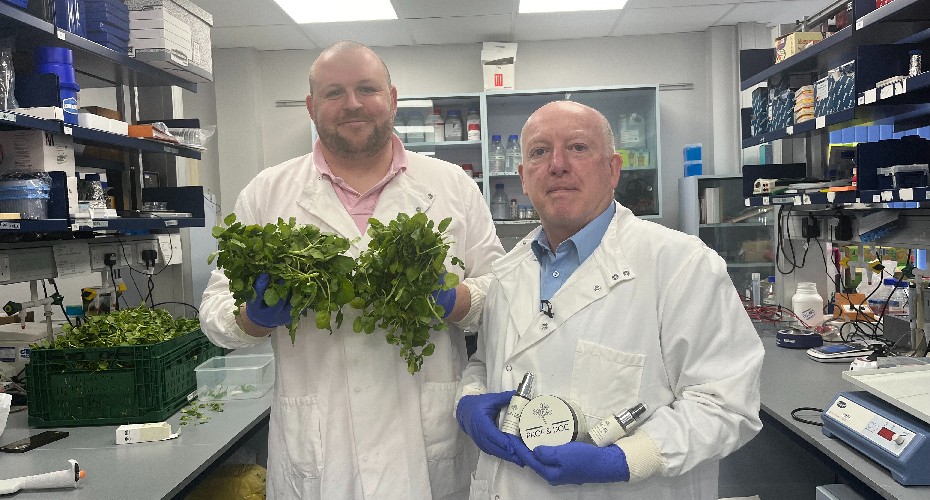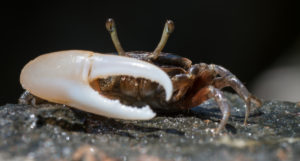Watercress skin care range launches as researchers explore health potential for superfood extract

It’s been named a “powerhouse” food because of its nutritional value, and now watercress is the key ingredient in a range of soothing skin care products, which launched this month.
After a decade of research, University of Exeter spinout business Watercress Research Limited has its first three products available to pre order, under the brand Prof and Doc.
Their research has found that a 10 per cent concentration of their specific watercress extract proves highly effective in helping to prevent skin irritation and promoting soothing effects for all skin types. Now, they have launched a skin cream and a mist, both at ten per cent concentration, and a serum, at 93 per cent concentration of the patent-pending watercress extract.
Dr Kyle Stewart said: “We know watercress is a superfood, and it’s no surprise that something so nutritionally dense could also have other beneficial properties. We’re really excited to launch these products, which our research has found can help prevent skin irritation and have a soothing effect. We think this is just the beginning of the potential for our watercress extract, and our product sales will help fund our ongoing research into whether watercress extract could potentially treat some inflammatory skin conditions.”
The story began when Dr Stewart was alerted to an unwell child with a severe case of nappy rash when he was on a ward round as a junior doctor in Torbay Hospital, South Devon, ten years ago. He and a colleague began to research treatment options, and found that some plants contain high levels of urease inhibitors, which block the enzyme that produces ammonia, and causes nappy rash.
Dr Stewart had an interest in the medicinal property of plants, which underpin many of today’s medicines. After experiments with camomile and pomegranates, Dr Stewart hit upon watercress, a plant which naturally contains high levels of urease inhibitors and is cheap and widely available. After some experiments in his mother’s kitchen, he discovered it was possible to extract the urease inhibitors and other useful compounds from watercress. It is likely watercress has urease inhibitors to help it hold on to the available nitrogen, allowing it to make protein for growth and repair.
Now, after partnering with Professor Paul Winyard at the University of Exeter, where Dr Stewart also holds an honorary contract, the team has developed a unique process to make a watercress extract rich in useful compounds for the skin.
Their project was kickstarted through initial funding totalling £150,000, donated by the Torbay Medical Research Fund, and more than £750,000 raised through private investment.
The story is a South West sustainability success story. The team uses surplus watercress from the Dorset-based grower The Watercress Company. The crop is then converted it into extract at Exeter’s Skypark and the final product is mixed and bottled in Tiverton, with quality control taking place in Paignton. Every part of the plant can be used, and the two byproducts are a watercress fibre and watercress protein with their own commercial value and sales route. This ethos recently won Watercress Research Limited the Sustainable Innovation award at VentureFest South.
Tom Amery, Managing Director of The Watercress Company said: “Watercress is an incredible product, and one of the most nutritionally-dense foods available. We’re really excited that the watercress that we can’t use is now being put to such fantastic use, and we can’t wait to see how this research develops.”
The team is now exploring whether tailored watercress extracts could be useful in treating skin conditions, including nappy rash, dermatitis, psoriasis and eczema.
Professor Paul Winyard, from the University of Exeter, said: “It’s still early days, but we’ve discovered so much in a decade, and we’re really excited about the potential for beneficial effects of watercress extracts on the skin. The next research and development stage will build on our promising early data, by testing whether preparations obtained from watercress are anti-inflammatory in skin inflammation driven by bacterial ureases. We’re also working on creating synthetic versions of the combinations of molecules we believe to be effective to progress down a licensing route. One day, we hope we could be developing new treatments derived from our bespoke formula of watercress components.”



